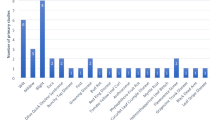Abstract
Insect pests have a significant impact on the fall in agricultural crop yield. As a preventative measure, overuse of pesticides in agriculture has the unexpected consequence of increasing pesticide residues in plants, disrupting the food chain. Traditional agricultural pest detection approaches are circumscribed, ineffectual, and time-consuming as these approaches rely on the manual selection of relevant feature sets. This work proposes an advanced crop pest recognition approach using deep Convolutional Neural Networks to reliably detect 102 common agricultural pest species. As a base model, the pre-trained model MobileNet is retrained to take advantage of the knowledge gained from a larger and more generalized dataset to achieve improved accuracy even with a smaller pest dataset. One hundred twenty-five different variety of models (as discussed in Training Cases section) were trained on the IP102 pest dataset. After a detailed analysis of various models and the impact of dataset split variations, hyperparameter tuning, the final optimal model is selected. The model is then deployed in a Flutter-based mobile application capable of classifying the pest by capturing the image of a pest from an inbuilt camera or by selecting one from the mobile gallery in both online and offline mode.










Similar content being viewed by others
References
Abadi, M. et al. (2016) ‘TensorFlow: A System for Large-Scale Machine Learning’. Available at: https://tensorflow.org. (Accessed: 5 August 2021).
Arel I, Rose D, Karnowski T (2010) Deep machine learning-A new frontier in artificial intelligence research. IEEE Comput Intell Mag 5(4):13–18. https://doi.org/10.1109/MCI.2010.938364
Barbedo JGA (2018) Impact of dataset size and variety on the effectiveness of deep learning and transfer learning for plant disease classification. Comput electron agric 153:46–53
Buetti-Dinh A et al (2019) Deep neural networks outperform human expert’s capacity in characterizing bioleaching bacterial biofilm composition. Biotechnol Rep 22:e00321. https://doi.org/10.1016/J.BTRE.2019.E00321
Deng, J. et al. (2009) ‘ImageNet: A Large-Scale Hierarchical Image Database’, Conference on Computer Vision and Pattern Recognition (CVPR). Available at: http://www.image-net.org. (Accessed: 5 August 2021).
Howard, A. G., Zhu, M., Chen, B., Kalenichenko, D., Wang, W., Weyand, T. Adam, H. (2017). Mobilenets: Efficient convolutional neural networks for mobile vision applications. arXiv preprint arXiv:1704.0486.
Islam Khan A, Al-Habsi S (2020) ScienceDirect sciencedirect machine learning in computer vision sciencedirect machine learning in Computer Vision. Procedia Comput Sci 167:1444–1451. https://doi.org/10.1016/j.procs.2020.03.355
Kasinathan T, Singaraju D, Uyyala SR (2020) Insect classification and detection in field crops using modern machine learning techniques. Inf Process Agric. https://doi.org/10.1016/J.INPA.2020.09.006
Kuzuhara H et al (2020) ‘Insect Pest Detection and Identification Method Based on Deep Learning for Realizing a Pest Control System’, 2020 59th Annual Conference of the Society of Instrument and Control Engineers of Japan. SICE 2020:709–714. https://doi.org/10.23919/SICE48898.2020.9240458
Shuangfeng L (2020) TensorFlow Lite: On-Device Machine Learning Framework. J Comput Res Dev 57(9):1839. https://doi.org/10.7544/ISSN1000-1239.2020.20200291
Türkoğlu M, Hanbay D (2019a) Plant disease and pest detection using deep learning-based features. Turk J Electr Eng Comput Sci 27(3):1636–1651
Wu X et al (2019) IP102: A large-scale benchmark dataset for insect pest recognition. Proce IEEE Comput Soc Conf Comput Vision Pattern Recognit 8779:8788. https://doi.org/10.1109/CVPR.2019.00899
Xia D, Chen P, Wang B, Zhang J, Xie C (2018) Insect Detection and Classification Based on an Improved Convolutional Neural Network. Sensors 18(12):4169
Xin M, Wang Y (2019) Research on image classification model based on deep convolution neural network EURASIP. J Image Video Process 1:1–11
Zhuang F, Qi Z, Duan K, Xi D, Zhu Y, Zhu H, He Q (2020) A Comprehensive Survey on Transfer Learning. Proc IEEE 109(1):43–76
Acknowledgements
The authors would like to express their gratitude to all of the organizations listed in this article for their direct or indirect assistance. We would want to acknowledge our indebtedness and render our heartfelt gratitude to all of our colleagues who made this effort possible. Their courteous assistance and competent recommendations were essential at all phases of the project. We'd like to take this opportunity to express our gratitude to our family members for their unwavering support and encouragement. Thanks, are also due to the referees for their valuable comments. This work has not received any financial funding.
Author information
Authors and Affiliations
Corresponding author
Ethics declarations
Conflict of interest
The authors declare no conflict of interest.
Ethical approval
This article does not contain any studies with human participants or animals performed by any of the authors.
Additional information
Editorial responsibility: Maryam Shabani.
Rights and permissions
About this article
Cite this article
Rimal, K., Shah, K.B. & Jha, A.K. Advanced multi-class deep learning convolution neural network approach for insect pest classification using TensorFlow. Int. J. Environ. Sci. Technol. 20, 4003–4016 (2023). https://doi.org/10.1007/s13762-022-04277-7
Received:
Revised:
Accepted:
Published:
Issue Date:
DOI: https://doi.org/10.1007/s13762-022-04277-7




